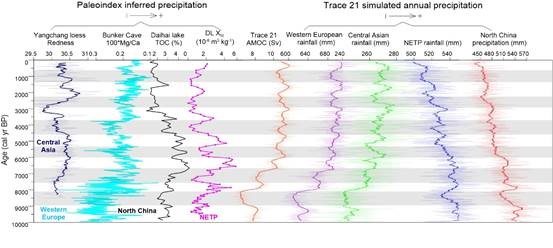On December 24, 2020, the international academic journal "Gondwana Research" (Gondwana Research) published the title "Correlation and anti-correlation of the Asian summer monsoon and westerlies during the Holocene". Related research). This achievement was jointly completed by Dr. Li Yun and Dr. Han Li from Qinghai Salt Lake Institute, Professor Liu Xingqi from Capital Normal University, researcher Song Yougui from Institute of Earth Environment, Chinese Academy of Sciences, and Dr. Wang Yixuan from Qinghai Salt Lake Institute.
Research on the correlation between westerly winds and Asian monsoons during the Holocene has received extensive attention in recent years, but there are still controversies. For this reason, this article has reconstructed the changes in precipitation since the Holocene in the northeastern part of the Qinghai-Tibet Plateau by investigating the loess and lake sediments in the northeastern part of the Qinghai-Tibet Plateau, and compared it with the records of other northern Chinese lakes, and found that they have good similarities. Therefore, we believe that the reconstructed precipitation changes can represent the history of Asian monsoon changes during the Holocene. These Asian monsoon records have an inverse correlation with the history of westerly wind changes studied by previous studies on the Holocene suborbital scale, but there is a positive correlation on the millennium scale. On this basis, we analyzed the results of the Trace21 simulation experiment and found that the seasonal variation of solar radiation (precession) is the reason for their anti-correlation on the suborbital scale, which is consistent with the results of previous studies. However, on the millennium scale, the North Atlantic Thermohaline Circulation (AMOC) is the reason for their positive correlation. The main contribution of our research results is that during the Holocene westerly winds and Asian monsoons have different correlations on different time scales (suborbital and millennial time scales), which refines and perfects the modal relationship between the Holocene westerly and monsoons.

Comparison of Asian monsoon and westerly indexes during the Holocene based on paleoclimate records and simulated data